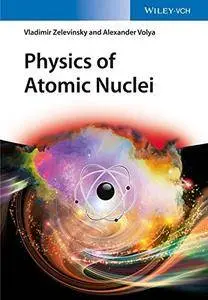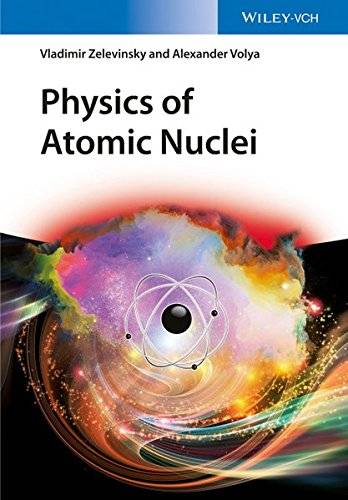Physics of Atomic Nuclei
Wiley VCH | English | May 2017 | ISBN-10: 3527413502 | 688 pages | PDF | 14.68 mb
Wiley VCH | English | May 2017 | ISBN-10: 3527413502 | 688 pages | PDF | 14.68 mb
by Vladimir Zelevinsky (Author), Alexander Volya (Author)
This advanced textbook presents an extensive and diverse study of low-energy nuclear physics considering the nucleus as a quantum system of strongly interacting constituents.
The contents guide students from the basic facts and ideas to more modern topics including important developments over the last 20 years, resulting in a comprehensive collection of major modern-day nuclear models otherwise unavailable in the current literature. The book emphasizes the common features of the nucleus and other many-body mesoscopic systems currently in the center of interest in physics. The authors have also included full problem sets that can be selected by lecturers and adjusted to specific interests for more advanced students, with many chapters containing links to freely available computer code. As a result, readers are equipped for scientific work in mesoscopic physics.
About the Author
Vladimir Zelevinsky is professor at the Department of Physics and Astronomy and at the National Superconducting Cyclotron Laboratory at Michigan State University, USA. In the 1980s he was Head of the Theory Division at the Budker Institute and Head of Theoretical Physics at Novosibirsk University, Russia. He spent three years as visiting professor at the Niels Bohr Institute in Copenhagen, Denmark. He is the author of over 250 scientific publications, deputy editor of the EPL journal and associate editor of the journal Nuclear Physics. He is also the author of Quantum Physics, 2 Volume Set, published with Wiley VCH in 2010.
Alexander Volya is professor of Physics at the Florida State University, USA. His education includes diploma from Tallinn Tynismae Science School, Estonia; bachelor's degree from St. Petersburg State University, Russia; doctoral degree in theoretical nuclear physics from Michigan State University; and postgraduate research work at the Argonne National Laboratory. In the fall of 2003, he joined the faculty at Florida State University where he currently leads a research program in theoretical nuclear physics and mesoscopic physics. He has published over 100 publications and has been regularly teaching nuclear physics courses at Florida State University.



